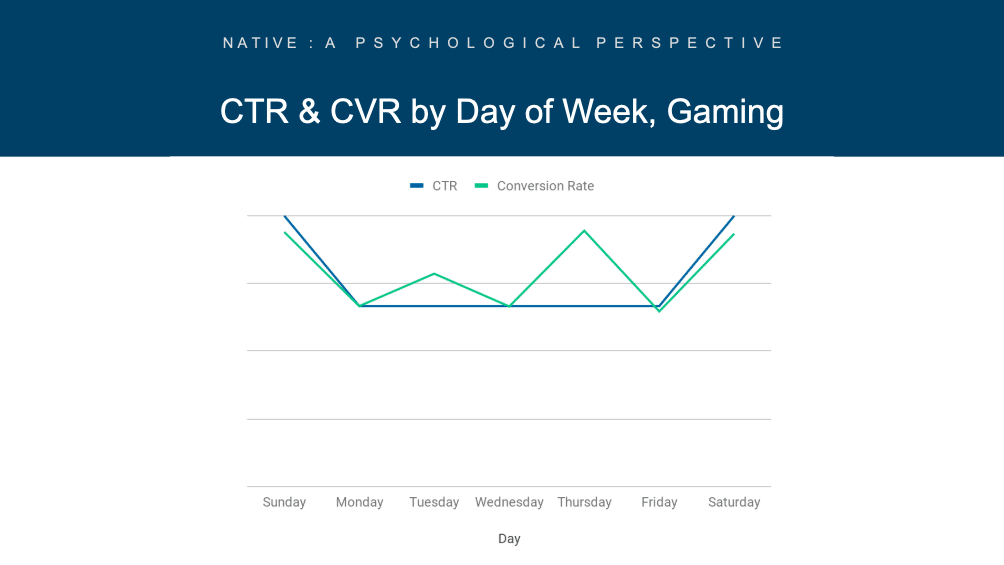The gaming industry is booming. Thanks to mobile apps, cloud-based programs, and new technologies such as virtual reality, gaming has gone mainstream, and gaming advertisers are reaping the rewards.
eMarketer expects gaming ad revenues to hit $3.6 billion in 2020 — up from $2.8 billion in 2018.
It is a very competitive industry, however. This means that publishers and brands have to be particularly smart with their advertising strategies, explained Rachel Zalta, Taboola’s Global Research & Insights Lead, earlier this summer. Zalta presented her conclusions on the psychology behind gaming marketing at the White Nights Conference, a leading B2B event for the game industry, in St. Petersburg in June.
Backed by a master’s in social psychology, Zalta was fresh from analyzing three months of data — 26 billion impressions and 21 million clicks — for gaming campaigns to better understand how consumers behave with native ads in the gaming industry.
Here’s what she found.
Native Advertising Gaming Conversions are highest on weekends and Thursdays
It’s no surprise that clicks and conversions for native advertising gaming content are high on weekends. Consumers are hanging out, relaxing, and looking for new games to play. More interestingly, however, conversions are also high on Thursdays.

Perhaps this is because gamers are gearing up for the weekend and trying out new apps to queue up their favorite games before the end of the week.
Tablets and desktops drive the most native advertising gaming conversions
Despite all the buzz around smartphone games and apps — eMarketer reports that 66% of males and females use smartphones to play video games — tablets and desktops drive the most conversions when it comes to gaming content.

Smartphones are more portable, but consumers seem more eager to try games on the bigger screens of tablets and desktop computers.
Italy, Greece, and Spain generate the most native advertising gaming clicks
Move over the U.S. and Japan, Italy, Greece, and Spain drive the most clicks for gaming content. And Belgium, Canada, and Australia lead with conversions.

Reports show that gaming in Italy is growing, and the country is a hotbed for new developers and independent gaming production companies.
Native advertising gaming best practices
Along with these findings, Zalta presented best practices for gaming advertisers to use in their native ads. Here’s what she advocated:
Stay away from stock images
Sure, it is temping to grab a stock image of a video game controller and slap it on your article. But use real, authentic images to engage your target audience and you’ll drive more clicks and conversions.

Build trust by citing reviews, ratings, and studies
Consumer trust in ads is dwindling. To earn or regain that trust, publishers and brands must include ratings, expert opinions, or gaming studies in their native advertising. Do you have a legitimate app that people love to play? Flaunt those five-star reviews. Was your game included in a top-10 list by a leading publisher? Promote that good press in your messaging.

Start with a small request
‘Install this game’ can seem like a daunting request — especially if you’re catching consumers at the end of an article and between online activities. Instead smaller asks like ‘Try this game for 1 minute’ can generate more clicks and conversions. In fact, advertisers told Zalta that people who click on these ads end up staying and engaging with their game. They just needed a little incentive to get their foot in the door.

Tap into gaming marketing trends every week
As the gaming market grows, consumer behaviors and marketing trends continue to evolve. That’s why Taboola Trends updates weekly with image, video, and headline trends in each content category, platform, and country. When you’re planning your ads or getting ready to launch your new campaigns, you need to know what audiences want to see right now — and how to deliver it to them.